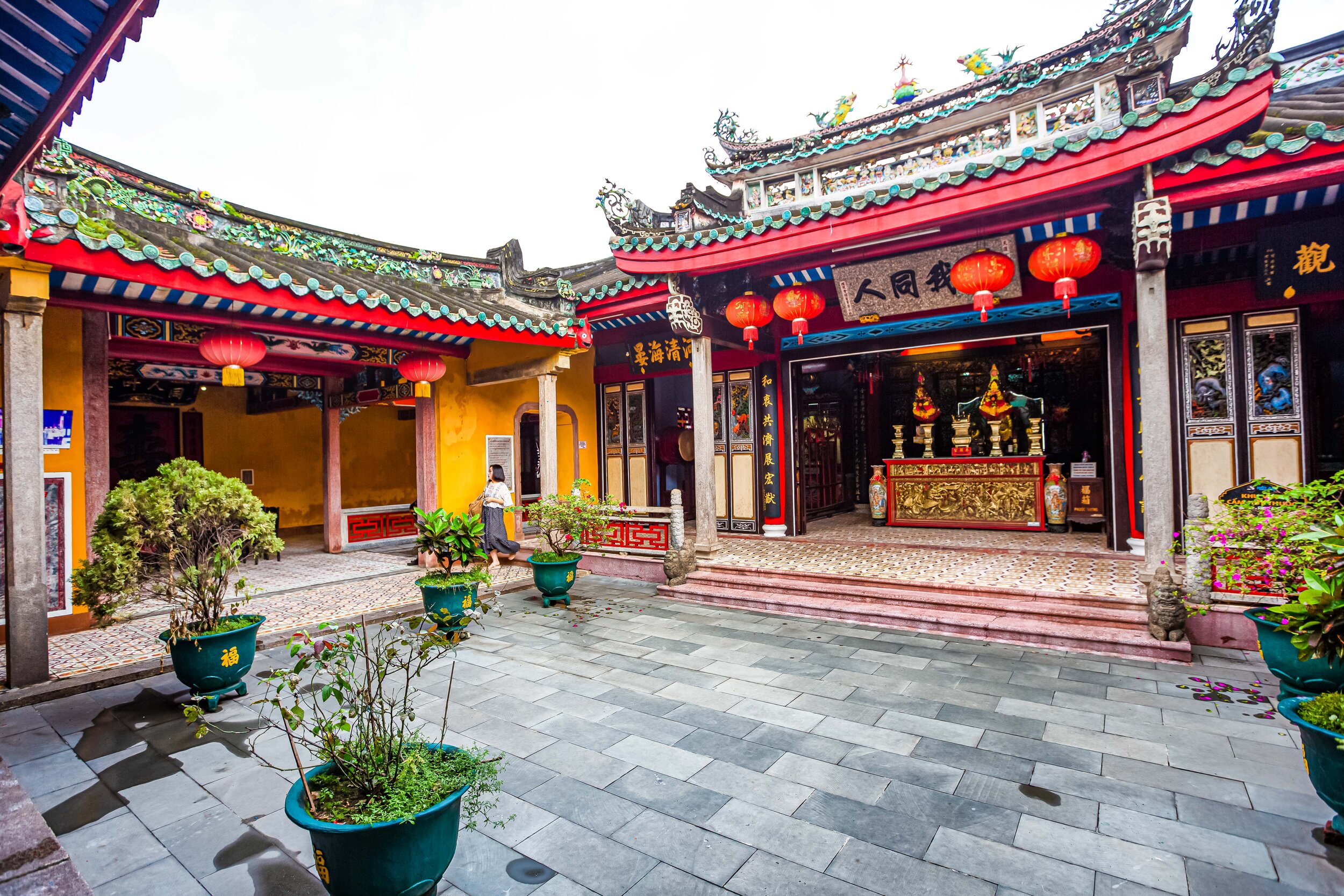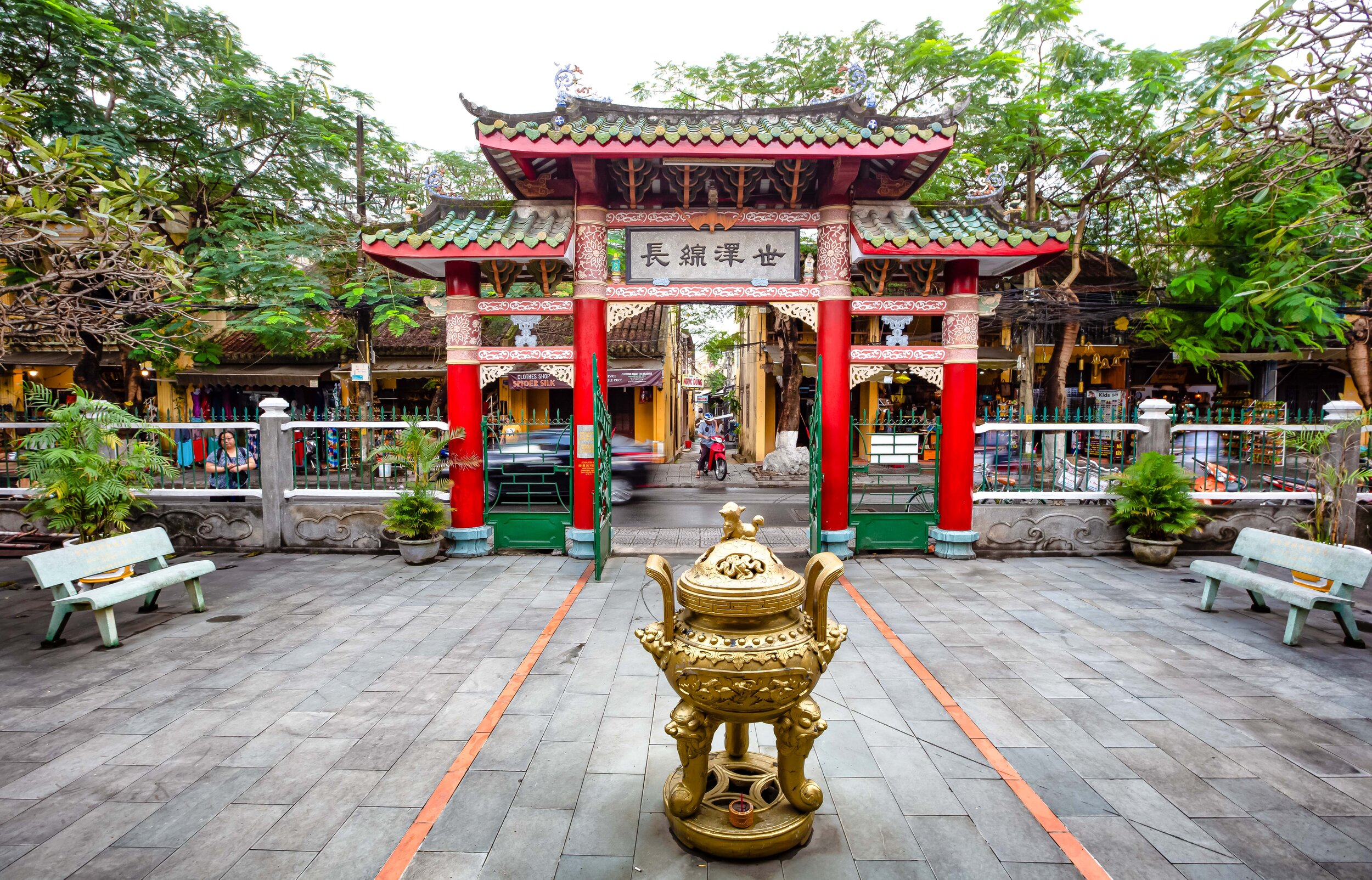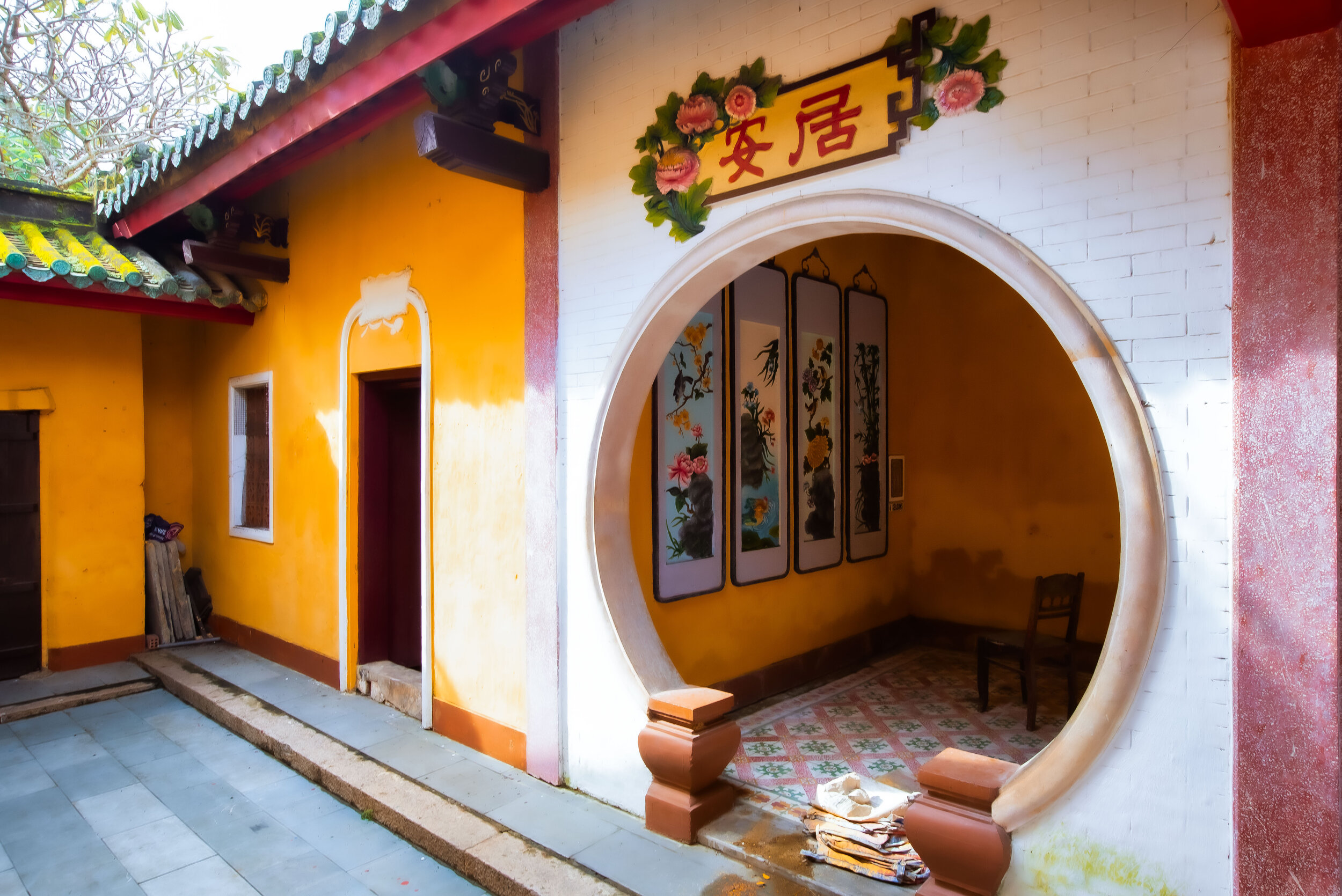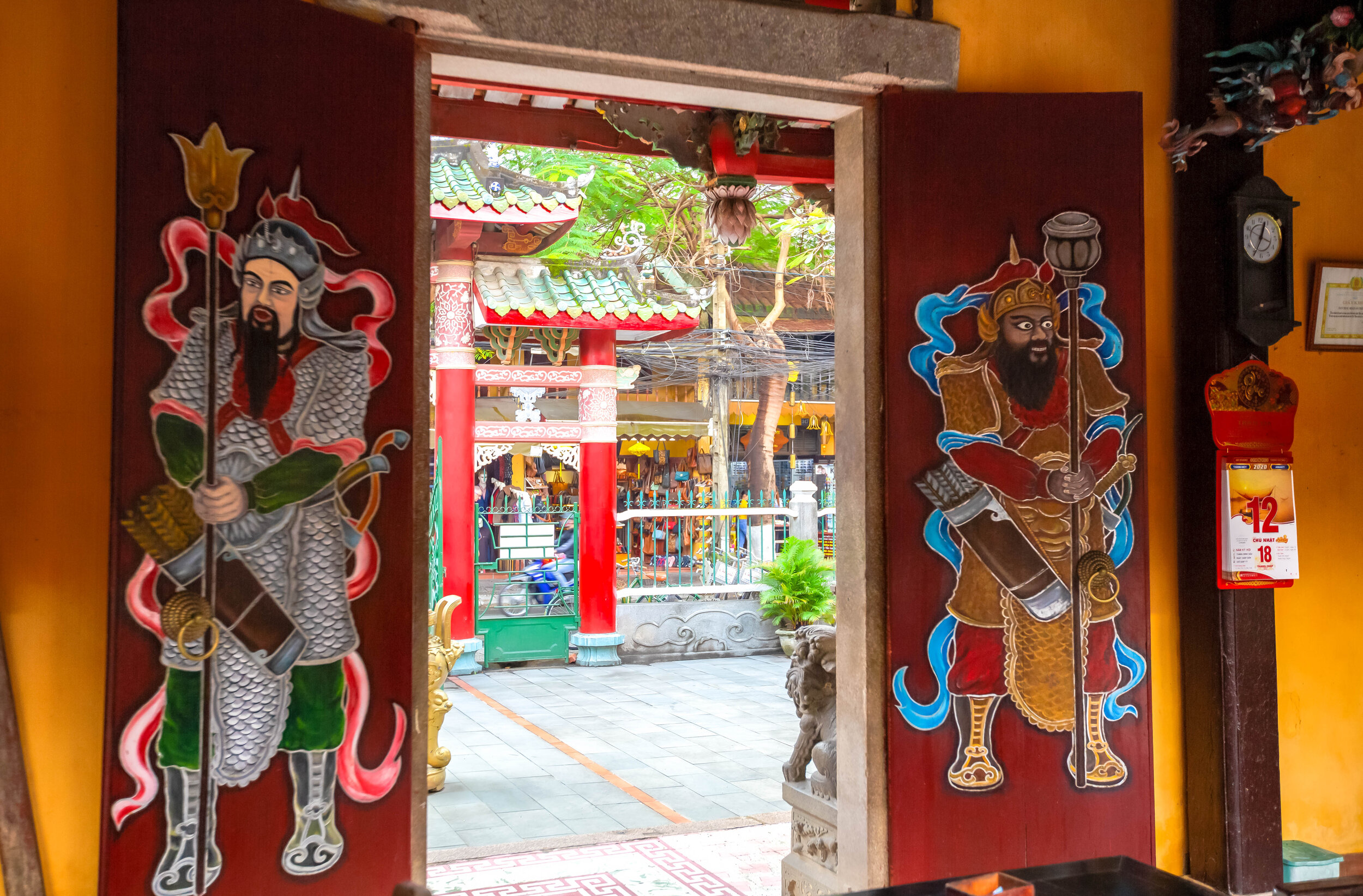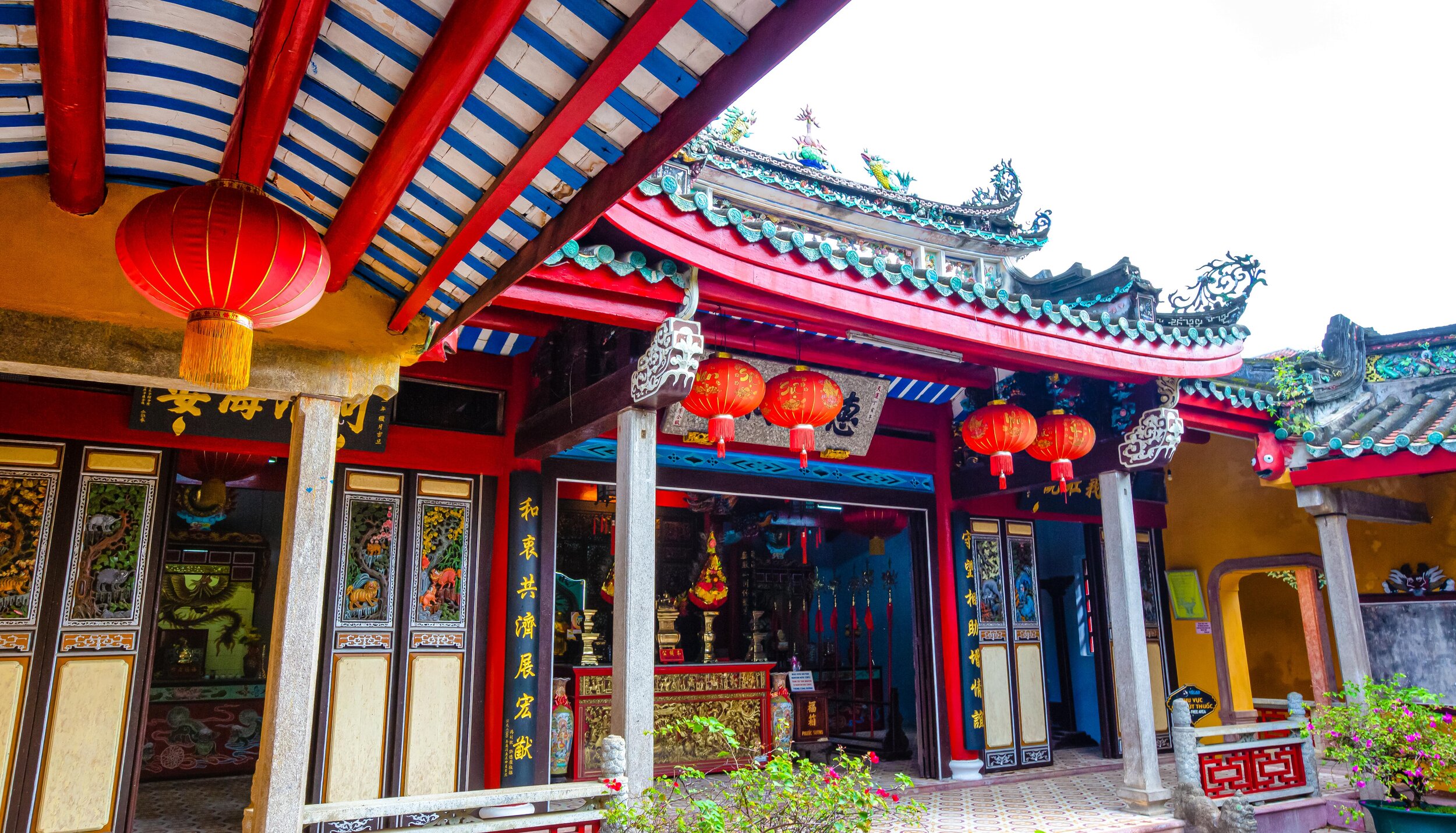Having arrived in Hoi An on a beautiful Saturday evening, I was feeling a bit ambivalent about my situation after a harrowing forty-minute drive from Da Nang Airport. Our driver beeped his horn at every moving object and weaved in and out of traffic like we were the only people on the road. I didn’t really know what to think about what I was seeing as the area where we were staying looking nothing like the picturesque photos I saw online.
After having something to eat, we decided to take a bike ride into town to check out Hoi An at night.
Halfway through our ride though, the bicycle one of my travel partners was riding decided to up and die. We figured we could find a place to get it repaired, but it was late and the further we walked, the worse the problem became.
So, instead of checking out the view, I decided to just pick the bike up from the back and wheel it back to our hotel.
This is where I learned a valuable lesson about Vietnam, which is one that I’m sure that almost every traveller who visits the country discovers in their own way.
After walking for about ten minutes, a group of local guys riding around on their motorcycles noticed we were having problems and stopped to ask if they could help. They look at the bike to see if they could fix it, had a laugh and chatted back and forth in Vietnamese before deciding to offer to take us back to our hotel.
Intrigued, I questioned how we’d manage to carry the bike back and after about a minute or two with a lot of hand gestures, they showed us how.
I picked up the bike, sat on the back of a motorcycle with the bicycle between myself and the driver with my feet dangling and they safely drove me back to our hotel while my travel partners road their bikes alongside.
When we arrived at our hotel, we thanked them and they said: “Have a great time in Vietnam!“
This was my first lesson in Vietnamese hospitality, but certainly not the last.
The next day we woke up early, had breakfast, grabbed our freshly repaired bikes and set off.
I was fully aware that Hoi An was going to be a great time, and knew beforehand that the historic UNESCO World Heritage Part of the town was full of tourist destinations that would be of particular interest to a nerd like me, but I don’t think I was actually aware of how great this short trip was going to be.
So, as we rode our bikes along the main stretch into town, I was enjoying all the things I was seeing, but when we came upon the Chaozhou Assembly Hall, I slammed the brakes on my bike and announced to my partners that it was time to stop to check something out.
They protested - This one wasn’t on our list of places that we planned to visit.
I insisted though.
From the outside, the Chaozhou Assembly Hall was beautiful and was glowing in the bright morning light.
Tourists were passing by in droves and like my partners, it didn’t seem like many people really wanted to stop by to check it out.
I wasn’t deterred though. I knew that there were only five of these Chinese Assembly Halls in Hoi An and even though this one wasn’t a major tourist destination, I figured I couldn’t leave town without checking them all out.
So, we parked out bikes at the front gate and walked in.
Before I start talking about the Chaozhou Assembly Hall, I think its probably important to remind you that if you haven’t already and are unaware of the purpose of these “Assembly Halls”, you should take a few moments to read my introduction to them:
Trieu Chau Assembly Hall (潮州會館)
The “Trieu Châu Assembly Hall”, otherwise known as the “Chaozhou Assembly Hall” was constructed in 1845 by an association of immigrants hailing from the Chaozhou (潮州) region of China’s southern Guangdong Province (廣東省).
The people of Chaozhou, known as the “Teochew” (潮州人) have a cultural history that dates back almost two thousand years and are one of the three major ethnic groups in the Guangdong region of China, which also includes the Cantonese (廣東人) and the Hakka (客家人).
The Teochew language, “Teo-Swa Min” (潮州話), which has been simplified in English as the “Teochew Dialect” is today spoken all over the world thanks to the maritime prowess of the Teochew people, who have left their home for business purposes as well as to escape persecution and famine.
As one of the largest groups within the Chinese diaspora, the Teochew have spread throughout the world, but particularly in South East Asia where they number in the millions. In Vietnam there is a saying: “Dưới sông cá chốt trên bờ Triều Châu“ which loosely means that there are about as many Teochew people in Vietnam as there are fish in the sea.
Unfortunately, after the Communists took control of Vietnam, the “Hoa people” (people of Chinese ethnicity) were one of the groups tagged by the new regime which created another mass migration with many choosing to flee the country becoming known as “boat people.”
Of the one million people of Chinese ancestry still living in Vietnam today, the Teochew account for around 40% of the total population - second only to the Cantonese. With this in mind, you’d think that the Teochew Assembly Hall would be one of the largest and most beautiful of all the halls in Hoi An - this however isn’t the case.
Link: Teochew People (Wiki)
The Teochew Assembly Hall is located on the outskirts of the historic district, modest in size and admittedly in need of repair. It is however quite beautiful and even though it is not as popular some of the other destinations in Hoi An, it has a storied history, traditional architecture and is quite peaceful in comparison to some of the other halls as it is not full of tourists.
Design
The design of the hall is somewhat of a variation of designs based on the traditional ‘Siheyuan’ (四合院) style of home with the ‘two-hall and two-protective dragon’ (兩殿兩護室) style of temple.
What this means is that the building is essentially a mixture on a home and place of worship
The hall consists of the following:
Front Gate (大門)
Courtyard (前埕)
Front Hall (前殿)
Eastern and Western Wings (護龍室)
Open-Air Courtyard (埕)
Main Hall (正殿)
The front gate which faces the road opens up to a narrow courtyard where you’ll find some trees and the front entrance. There isn’t really much to see in the courtyard and it seems like quite a few locals use it as a parking space for their scooters.
The exterior of the Front Hall is beautifully designed and features a Southern Chinese style Swallowtail Roof (燕尾脊) with some pretty designs on each of the tips of the roof. There are also a couple of wood-carved circular murals of dragons on both the left and right of the main entrance, which are just a taste of some of the woodwork you’ll see inside.
Once you’ve entered the building you’ll notice that directly in front is the open-air courtyard with the co-called ‘protective dragons’ (護龍) on the east and west sides and the main hall (正殿). The design is enclosed on all four sides and as is tradition forms the Chinese character ‘huí’ (回), which is auspicious in terms of Feng Shui.
There’s not actually much to see in the courtyard, but they have some plants on each of the corners with an incense urn in the middle.
One of the major variations in the design of a typical ‘Siheyuan’ or ‘Ancestral Temple’ is that the two wings on the east and west are considerably larger with each side performing a specific function. The western side consists of a large open room with two small shrine rooms on either end.
The shrine rooms on this side are used for ancestral worship and giving appreciation to the people who helped construct the hall. This is an important space for the descendants of the Teochew community to come for worshipping their ancestors as well as a space for worshipping specific Teochew heroes who helped to develop the community.
The large open space on the eastern side is where meetings are typically held so you’ll find quite a few tables and chairs. The western side has a more formal meeting space where there’s a large table, chairs and a mural with a beautiful Chinese character for “longevity” (壽) on it.
The main attraction of the hall for most people though is probably the shrine room in the main hall.
The interior of the hall is beautifully decorated and features three separate shrines.
The main shrine (the one in the middle) is dedicated to “Phuc Ba” (伏波將軍) with the God of Wealth (財神) and the “God of Luck” to the left and the right.
This however is where some of the literature you’ll find about the Assembly Hall on other sites becomes a bit confusing - The “God of Wealth” who is known as “Thần Tài” (財神老爺) in Vietnam is actually an apt description, but the “God of Luck” is a bit misleading as it is actually “Phước Đức” (福德老爺), otherwise known as the “Earth God” or the “Land God”, one of Chinese Folk-Religion’s most popular deities.
Link: Tudigong (Wiki)
The reason for the mix up in English translation is likely due to the fact that the Earth God’s name in Chinese has the character “fú” (福) which is an auspicious and ‘lucky’ word.
Phuc Ba, who is known as the “Water God” is thought to have control over the wind and waves.
He is somewhat of an obscure folk-religion deity from China, where he is known as “General Fubo” or “General Ma Yuan” (馬援將軍). General Ma is one of Chinese history’s most revered military leaders and is remembered not only for his victories in battle but also his perseverance and the respect that he showed to his friends and all of those under his command.
Link: General Ma Yuan (Wiki)
Interestingly, in Vietnam he is known for his victory over the Trưng Sisters (Hai Bà Trưng), who are regarded as national heroes for their short-lived resistance movement against Chinese rule. Today there are temples dedicated to them all over Vietnam and an annual holiday in February that commemorates their deaths.
Maybe its just me, but it seems strange (and rather bold) that you can find a Chinese shrine in Vietnam dedicated to the man who (allegedly) decapitated two of their most revered national heroes.
I hope I’m not letting the cat out of the bag here..
Once you’ve experienced the architectural design of all of Hoi An’s Assembly Halls, you’ll likely discover that most of them follow a same layout. What is different, especially with this particular hall is the lacquered boards, murals and exquisite wood carvings that you’ll find throughout the interior and exterior of the hall.
If there is one thing that the people of Chaozhou are famous for when it comes to design, its their skill with woodcarving.
Teochew woodcarving (潮州木雕) is an art form that developed during the Tang Dynasty (唐朝) that is highly regarded for its precision, sophistication and lifelike sculptures. Teochew woodcarving is known for its depiction of phoenixes, dragons, flowers and sea life, so if you are visiting this Assembly Hall, you’ll want to pay special attention to the windows, doors, beams and roof for some of these beautiful designs.
Link: Branching out: the breathtaking detail of Chaozhou woodcarving (GB Times)
Even though this Assembly Hall appears to be a bit run down, I can’t stress it enough, the beauty is in the details, so if you don’t pay close attention to all the small things, you’re going to miss out.
Getting There
Address: 157 Nguyen Duy Hieu Street
Hoi An is a coastal town in Vietnam’s central Quang Nam province that is a 30km drive southeast of neighbouring Da Nang City (峴港市). Since Hoi An has become such a popular destination for travellers, getting to the historic town from Da Nang is quite convenient. Whether you arrive by air through Da Nang International Airport, by train through Da Nang Station or by coach, you’ll be able to easily get yourself to Hoi An through public or private transport, all of which are quite affordable.
While staying in Vietnam, you should also download the “Grab” app for your phone so that you can easily grab a taxi during your travels without having to worry about getting cheated.
Link: Transportation Guide: How to Get from Da Nang to Hoi An
Once you’ve arrived in Hoi An, getting around is really easy - just walk everywhere!
The ‘Old Town’ area of Hoi An that has become a UNESCO World Heritage Site isn’t all that big, and due to so much pedestrian traffic, they’ve blocked the area off from cars, so unless you’re riding a bicycle or a scooter, the best way to get around is on foot.
When you’re ready to start exploring you’ll find that the majority of historic properties, temples, museums and restaurants are located on or between the riverside and Tran Phu Street. What you’ll want to keep in mind though is that exploring the historic properties of Old Town isn’t free, so you’re going to have to purchase an entrance ticket.
The entrance tickets are 120,000 VND (5 USD) per person and gives you access to five sightseeing places. The tickets are valid for the duration of your stay, so if you don’t use all of the tickets on your first day, you’ll still be able to use what you have remaining on the next day.
With so many places to visit within the Old Town though, five tickets might not be enough, so you might have to purchase a second set of tickets if you want to fully experience the town.
Link: Hoi An Old Town Ticket, Entrance Fees & Sites (Hidden Hoi An)
As I mentioned above, most of the places you’re going to want to see are located within a short distance of each other, but the Chaozhou Assembly Hall is outside of that downtown core, making it one of the quietest of all of the historic properties in Hoi An.
The hall is located on “Nguyen Duy Hieu Street”, a short distance from where that street ends and becomes the much more popular Tran Phu Street. Don’t let the different street name fool you as they’re more or less the same road.
There is a ticket booth nearby where you can purchase tickets for the old town, so if you stayed outside of the old town, you can pick up your tickets and stop by.
Even though the Chaozhou Assembly Hall isn’t as popular as some of the other historic properties, its still a great place to visit. The relative quiet you’ll experience while there should also allow you to better enjoy the skill and craftsmanship that went into constructing the building.
The hall is open from 8:00 am - 5:00 pm daily.

